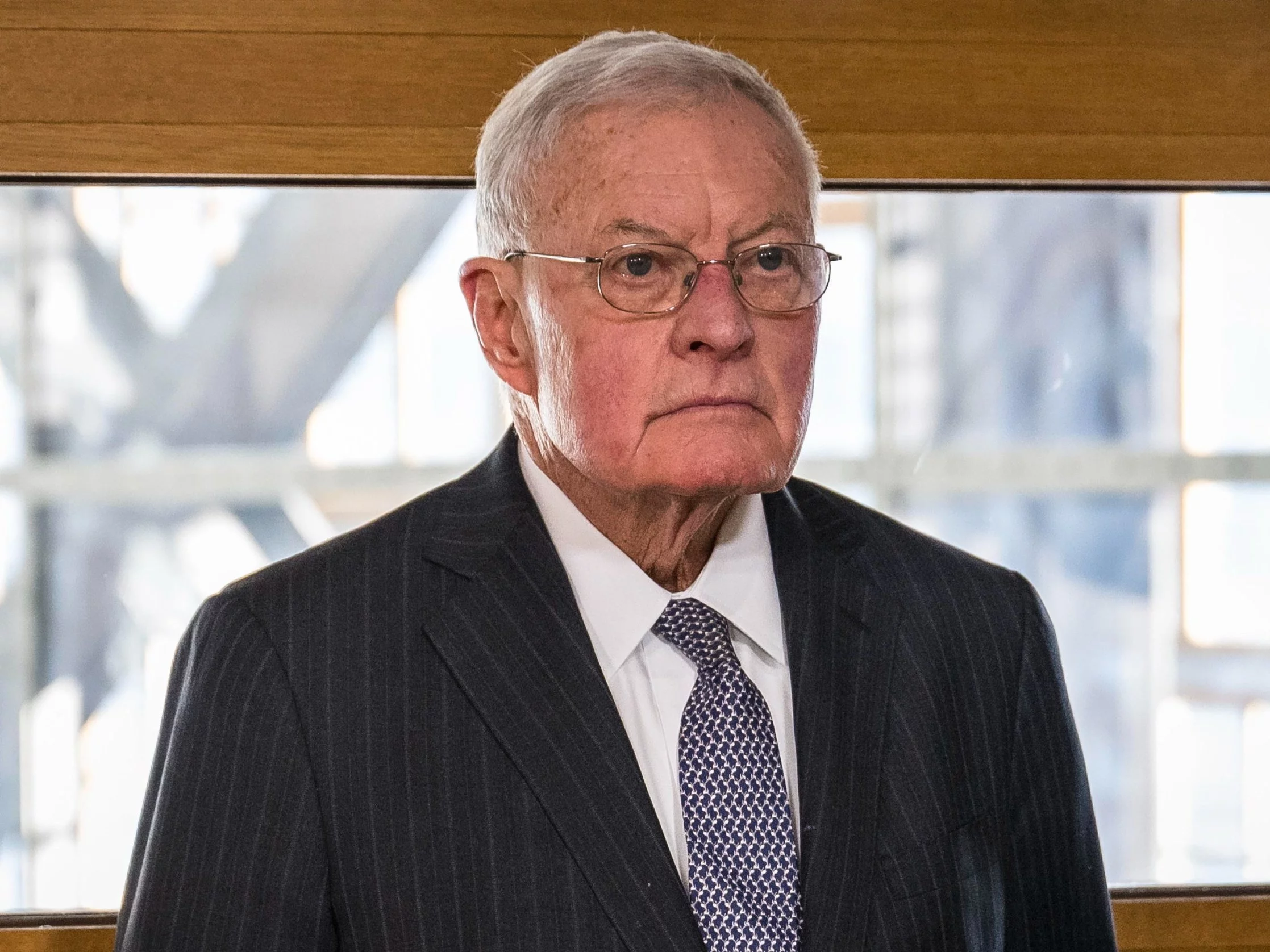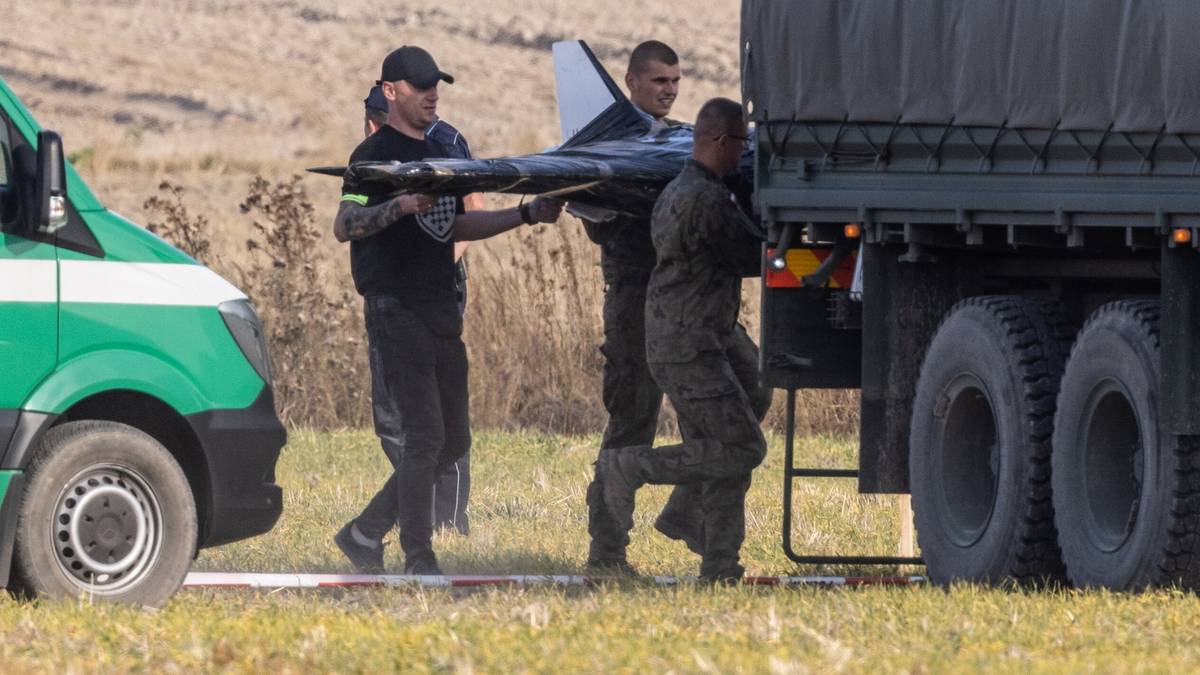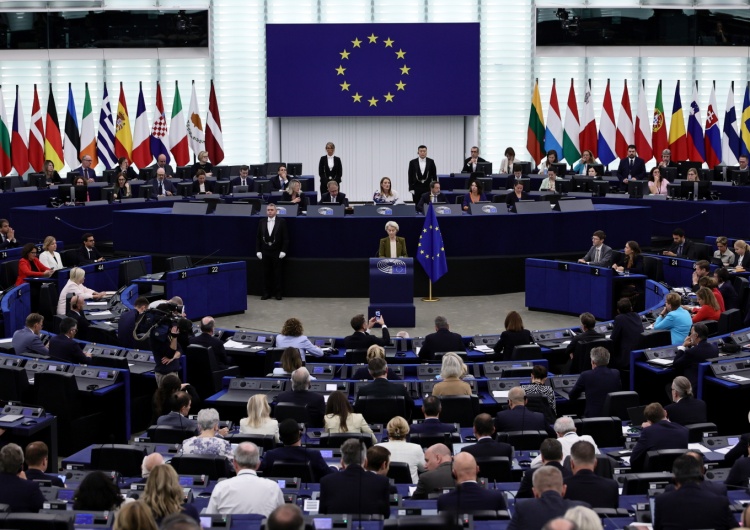A lot has late been written in Polish publications about the colonial character of Russia and its supposedly possible "internal decolonization", i.e. the dissolution of the Russian Federation.
The latter, of course, are only deliriums blinded by the hatred of rusophobes, due to the fact that if in the second half of the 19th century the Greater Russians constituted just over 40% of all subjects of the Russian Empire, and as part of the russian demographic dynamics since 1970. The percent of the Greater Russians in his population was decreasing increasingly violently for the Central Asian peoples, it is already in the case of the Russian Federation, the next large-scale ethnos-Tatars of the Bovolzian and related Bashkiers that number only somewhat more than 5% of the full population of that country, the further 5% are the inhabitants of the Caucasus and the inhabitants of all republics with a tiny majority do not scope up to 15% of the full population. Without wasting any more attention on the “neopromethean” stories of Polish “experts” about the “internal decolonization of Russia”, let us think about how much it was a colonial state at all, and what was different from another powers of this type?
Expansion
The feature resembling Russia to the colonial empire was surely an awesome pace of expansion, which continued continuously from the 15th century until the beginning of the 20th century. During any periods of its existence, Tsarsk Russia expanded its territory on average by 1.8% of the erstwhile area per year. In 1914, it occupied 1/6 of the globe's surface, extending from Łódź to Vladivostok and from Helsinki to the peaks of Pamir. The alleged difference is, in general, the tiny share of overseas expansion in the expansion of Russian estates. In his classical work “From expansion to dominance. Test of colonial theory” (1986) Prof. Jan Kieniewicz defines colonialism as a forceful occupying of territories clearly distinct geographically (located outside the waters surrounding Europe), ethnically and legally (being territories of another countries or being non-organised state spaces). Most of Moscow's territorial acquisitions did not bear this character.
In the 16th century, the rulers of Moscow colonize the wilderness on the river of that name and over the rivers of the Oka and Kłaźma, at the same time beginning the "collection of Russian lands". By the early 17th century, they were defeated by another Khanates left after the Golden Order. By the early 18th century, they join Siberia. By the early 19th century, they grow Russian territory at the expense of regional centres of force located in the west, specified as Sweden, Rzeczpospolita, Chanat Krymski. Following the defeat in the Crimean War, Russia occupies Central Asia and countries on the nipponese and Ochocki seas (the Beijing Pact with China in 1860), but in this direction its expansion is halted by the losing war with Japan from 1904 to 1905.
It is powerfully essential to exclude its territorial acquisitions in the west from considering the colonial nature of Russian expansion. Ukrainian, Inflantic, Scandinavian lands (Finland with the Åland Islands acquired in 1809 at the expense of Sweden) met the criterion of classical European territorial expansion, not colonial expansion. Apart from the emotional more than analytical voices of the fewer political migrants in the 20th century and the publicist movie presenting the satellite states of the Warsaw Pact as “colonial” countries to the economical exploitation of the USSR, the Western acquisitions of Russia were never regarded as its “colonies”.
In the opinion of both 19th-century observers and 20th-century historians, at least any of the peoples inhabiting the western regions of the Russian Empire were civilizationally more organized than the Greater Russians themselves (German Baltics, Swedes, Poles) or at a akin level (inhabitants of Western lands). In the case of colonial empires, the relation arrangement is the opposite: this metropolis is always organized higher than its colonies. Under the category of armed conquest, it falls out to those countries whose rulers or elites voluntarily annexed them to the empire. For example, the Czuwaszów and Nogajów (XVI century), Kalmuków (XVIII century), Kazakhs and Ukrainian Cossacks (XVIII century), or the aristocratic elites of Georgia and Armenia (the beginning of the 19th century) for which inclusion in Orthodox Russia was a change for the better, whether compared to being constantly plagued by the war of the "front wall" (Georgia) or to being Christian (or second category) subjects of the Shiite Persian Empire for many centuries.
Anecdotic only matters overseas episodes and ambitions of the Russian Empire; in the 17th century, the union of the Ethiopian monophysic Church with the Russian Orthodox Church was considered to ally both states against the Ottoman Empire; Catherine II planned to deploy the Russian "socistical" troops in a relaxed relation with Istanbul of Egypt; from the late 18th century until the mid-19th century there were Russian colonies in Alaska and California; in the early 19th century a German adventurer in the Russian service attempted to extend the Russian protectorate over Hawaii; in 1889 a group of Cossack adventurers briefly took over the African port of Sagallo on behalf of Russia; again Ethiopia as an ally against the Ottomans planned to engage Nicholas II.
On the another hand, the emergence of colonial consciousness in Russia was evidenced by the taking up of the large Game with England in Central Asia, which was part of the colonial policy of the time.. The Beijing Treaty of 1860 was an component balancing the concessions obtained in China in the same year by England and France. In January 1801, Tsar Paul I planned to send 20,000 Cossacks south to scope the Indian Ocean, however, his initiative was blocked in Russia itself, where it was never again seriously considered to master India. However, in the second half of the 19th century, countries penetrated by English like Sinciang, Afghanistan, and Persia were affected by Russian penetration. In the northern part of the Eurasian continent, however, Russia had virtually no competitors until 1904.
Management
The issue of expansion methods is no little problematic in Russia. It is brought closer to conventional colonial empires by the spontaneous activity of adventurers, then settlers loosely controlled by the political center, and yet sending organized expeditions and the introduction of uniform administration. The Russians made geographical discoveries, utilized European technology ("guns, germs and machines" as defined by an anthropologist Jared Diamond), controlled the associated territories utilizing an organized European model of administration and, like colonial powers, utilizing an indirect board, that is, engaging local elites in ungrateful tasks specified as taxation collection. Less than in the colonies of Western European states was the Christian proselytism, and there was no legal inclusion of the “white man” formula.
Similarity between England, France and Russia is seen in the usage of distant provinces as locations of the repression of: The English sent criminals to fresh England and Australia, the French sent prisoners to Guyana and fresh Caledonia, while the Russians sent political criminals to Siberia. Unlike the struggling overcrowding of the Netherlands or England, there has never been a demographic force on colonization in Russia. Siberia was treated in the Russian Empire as a large reservoir of fur and wood, which made it akin to the position of fresh France in the French colonial empire – both Moscow and Paris were satisfied with the extended exploitation of their non-European estates, which otherwise allowed the indigenous peoples to survive, unlike the exterminated inhabitants of the Spanish, English, or German empires.
Colonial Trends Growing
The increasing characteristics of the colonial empire are in Russia for the last 4th of the 19th century. That was erstwhile Central Asia was conquered, the “Great Game” with the English started, the January uprising in Poland was suppressed, and the Chamil uprising in Dagestan and Chechnya lasted for 30 years. Russian campaigns in Central Asia by gene. Konstantina von Kaufman of 1873 or by gene. Mikhail Skobielev In 1881, erstwhile respective 100 or respective 1000 military, thanks to the superiority of arms and organizations, defeated respective tens of thousands of locals, sometimes destroying full peoples, they are almost completely different from colonial English, French, or Yankee wars with indigenous North American residents.
With the abolition of the subservience of peasants and the beginning of agrarian reforms, the thought of an organized settlement appeared in Russia, which was respective decades late compared to the West, industrialization in turn created a layer of modern merchants and industrialists looking for natural materials, labour and outlets. Unlike the U.S. or Ottoman Empire, railway lines – specified as those built in Central Asia until 1914 – are built in Russia on order of the army, wanting to control more closely the susceptible Turkiestian provinces and "round" the borders of the state. Russia besides uses the human resources of peripheral countries in its military campaigns, shifting them to other ends of the Empire – Polish officers fight in the Caucasus, Cherkies camp in Saski Square.
This is erstwhile cotton monocultures are created east of Volga and the Fergana Basin, which was a model example of colonial policy, making much of Central Asia dependent on the supply of grain from another parts of the Empire and its economical success on the prices of cotton on planet markets. The model of cotton monoculture will besides be preserved in the times of the USSR, erstwhile 90% of the crops in Turkmenistan and Kazakhstan will be cotton. Not only will the Central Asian republics stay food-independent, but they will besides be affected by the ecological disaster of the clearing of cultivated lands. The decision to rehydrate the deserts of Central Asia with the waters of Sir-Daria and Amu-Daria will besides have even worse effects in Moscow, resulting in the drying of the Aral Lake.
Historians point out that the Russian writings of the last 4th of the 19th century show motifs resembling Kiplingowski's "burden of white man"; Russian authors justify conquests by carrying the conquered peoples "the birthrights of civilization", since 1826 the Russian administration has been trying to root out slavery and torture in the associated countries, and attempts to spread Christianity are besides undertaken. However, regardless of the presence in the Russian ports of schooners with tea (imported from China and then from the Caucasus), there is mostly no "colonial mentality" among Russians. There was nothing in Tsarist Russia that would correspond to the Western European "ministeries of the colony".
Lack of colonial awareness
The blur of the border between the political centre and the periphery, which in the case of the Western European colonial powers clearly marked the sea, the proximity of the Russian peoples straight to the civilizationally different peoples of the Uranian and Ugrophiń peoples, as well as the monarchial-powerful political strategy of Russia, caused that the Western category of "nation" and "Russianity" was not developed among the Greater Russians in the time of Tsar's Russia. Nor did there be any legal bindings in Tsar's Russia for "white man's superiority". Even the last 4th of the 19th century thought of itself first of all as a "subdued Tsar", and so could the typical of indigenous peoples of the Caucasus or a resident of 1 of Russia's conquered Central Asian Khanates.
Russian thinkers of Slavophile and conservative orientation opposed the aggressive colonial empires of Western states of the patrimonial Russian monarchy, caring for all subjects of the peoples. This different attitude can be seen in the Russian attempts to win the peoples of Buriaci, Mongolians and Tibetans neighbouring Russia, who, in the late 19th century, the Russian Ministry of abroad Affairs tried to convince that the Russian Tsar was Bodhisatwa – 1 of Buddha's incarnations. Something like this would be unthinkable in the case of those looking with civilization's superiority to the "exotic" peoples of the Western Powers.
Empire, not imperialism
The question of whether Russia was a colonial empire is best summed up by a neat take by a historian Geoffrey Hosinga"Great Britain had an empire, Russia was an empire." To realize these words, it is worth to separate between "imperium" and "imperialism". The erstwhile is simply a conventional political category, meaning “transnational order”. The phenomenon of the second was characterized by the economist. John Hobson, writing that imperialism arises under conditions of subordination of the metropolis state to capital, which then uses metropolitan armed forces and metropolitan resources of the country to get another countries which are now intended to service as a origin of natural materials, outlets, places of export surplus capital and the basis for military control of strategical trade and transport hubs by metropolitan capitalists.
Tsarsk Russia was not an imperialist state due to the fact that almost to the end of its existence the capital was not able to "take over" the state there. Neither did the "Russian people" develop, so there was no mention of its dominance over another Empire peoples. Historian Dominic Lieven it correctly compares the Russian Empire to the Austrian Habsburg Empire. We can add here that it would most likely be even more appropriate to associate it with the Ottoman Empire, which besides expanded into adjacent land territories, but inhabited by different ethnicities (although not always little civilizationally organized than the Turks) peoples. Like the Russian Empire, the Ottoman Empire besides expanded to the west in the European area. As in the case of the Russian Empire, there was no legal binding of the Turks over the Arabs and another peripheral peoples in the Ottoman Empire.
We could sum up that both Habsburg Austria, Tsar Russia and the Ottoman Empire were conventional political creations (imperias), while Western European colonial powers were modern creations (colonial capital empires). The Russian Empire, like the another 2 mentioned, was subject to external corruption, taking over any of the characteristics of Western colonial states. But until the end of its existence, Tsaric Russia served religion and dynasty, while Western states served capital and their titular nation.
The russian Union in its assumptions was not intended to be a colonial empire but a tool for building a post-national proletarian society of a fresh type, in practice it had to usage the civilization possible of the Greater Russians to benefit from the more conventional and little organized civilizational peoples. These, however, were not to be beneficiaries of the process of building communism, but of its first victims.
The national emancipation of peripheral peoples from the dominance of the Greater Russians was to open the way for them to modernise and let them to be incorporated into the russian project. However, the more modern Wielkopolskas had to inspire this modernization, which was besides the main support for the russian state. This should be explained by the usage of the Greater Russians for state construction and modernisation in another non-Russian russian republics as well as their occasional patriotic mobilisation in times of state threat.
Tsarist Russia was not a colonial empire, it was a conventional empire, The russian Union was founded on the ideology of the demolition of the Russian Empire and the "death" of individual nationalities – including the "death" of the Greater Russians. As a consequence of this historical specificity, over 190 cultural groups presently live within the borders of the Russian Federation today. According to their size, they cultivate and make their own languages, cultures, literature, cinematography, educational systems and even religions.
Empire that can (no) survive
Unlike the Spaniards, the English, the Germans, the Belgians, and the Yankees who carried out genocides in their colonies, as well as the French who spread in them modernist rot, Tsarsk Russia conquered fresh lands without exterminateing their indigenous people. In turn, during the period of communism, despite national repression (against Poles, Ukrainians, Crimean Tatars, Chechens, etc.), the emphasis placed on the policy of national emancipation had the Stalinist leadership refrained even in the face of a war danger from mobilizing men from a tiny number of peripheral ethnos (e.g. Siberian) erstwhile it was estimated that this could jeopardise the endurance of the people.
For all these reasons, the Russian Empire appears to be the only European empire that deserves to survive. His survival, however, seems highly doubtful. Since the 1950s. The large-scales are experiencing increasingly lower demographic dynamics, which changes the cultural proportions of the Russian Federation itself and the ratio of the Russian Federation's population to the population of the Caucasus and Central Asia. This goes hand in hand with the decrease in the popularity of Russian and Cyrillic languages and the decreasing importance of Russian Orthodoxy. Finally, an inept policy Vladimir Putin In Ukraine, it was likely that Russia could reintergrete the country, and without this, the Russian Federation would not scope the ceiling of 140 million citizens, which is simply a threshold condition for being a planet power. Bringing NATO's military installations closer to the western borders of Russia (Skandinavia, Ukraine) makes considering any Russian power without object.
Ronald Lasecki
In the illustration: Russian troops in Tashkent (1868)
Think Poland, No. 41-42 (8-15.10.2023)















